Abstract
Eight cases of obstructive hydrocephalus manifesting palsy of upward gaze and other features of the Sylvian aqueduct syndrome are reported. During the crisis of intracranial hypertension, all of them developed upward gaze palsy and variable abnormalities of the convergence mechanism such as paralysis, spasm, and convergence nystagmus. The frequent apparent blindness was probably related to gaze paralysis, since visual evoked responses were present. All these ocular abnormalities disappeared after shunting. Periaqueductal dysfunction on the basis of raised intracranial pressure is postulated as the possible mechanism for the above ocular manifestations. The 'setting sun' sign is frequently seen in infants and children with hydrocephalus and has been considered in the past to result from displacement of eyeballs by pressure from the orbital roof plate. Our observations would suggest periaqueductal dysfunction rather than the mechanical displacement as the possible mechanism for this sign.
Full text
PDF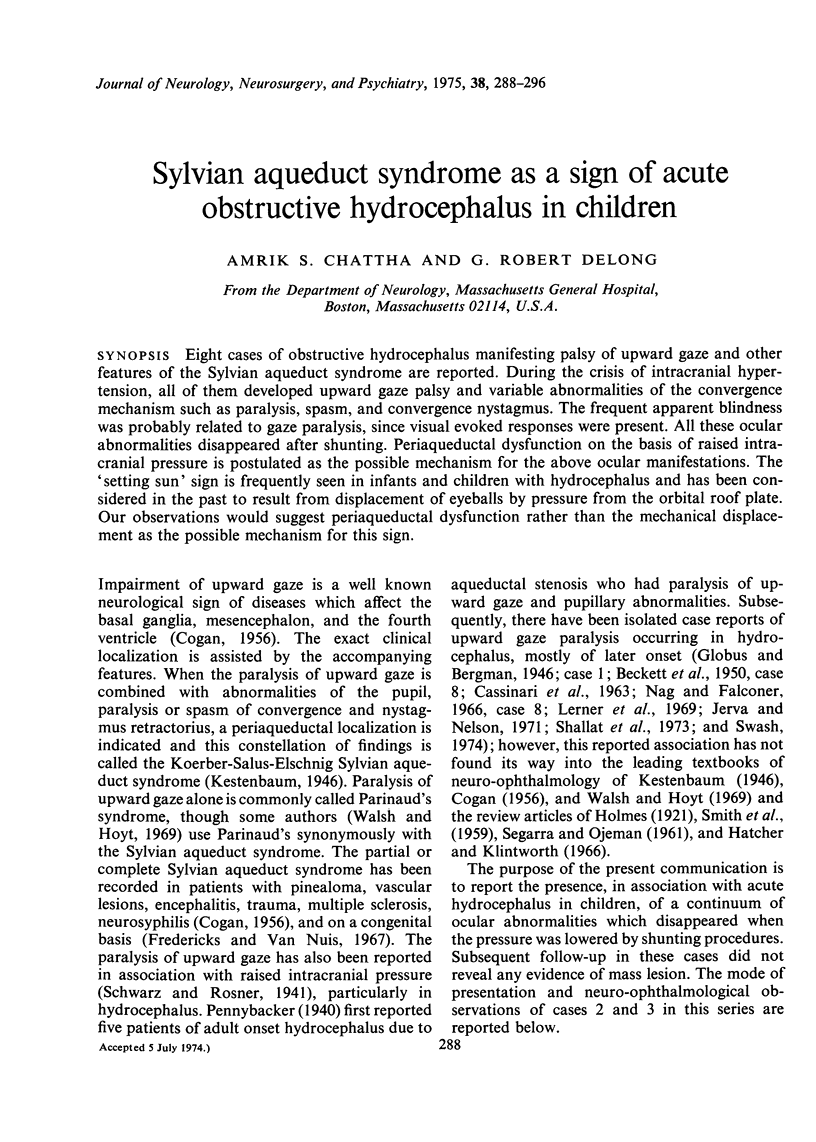
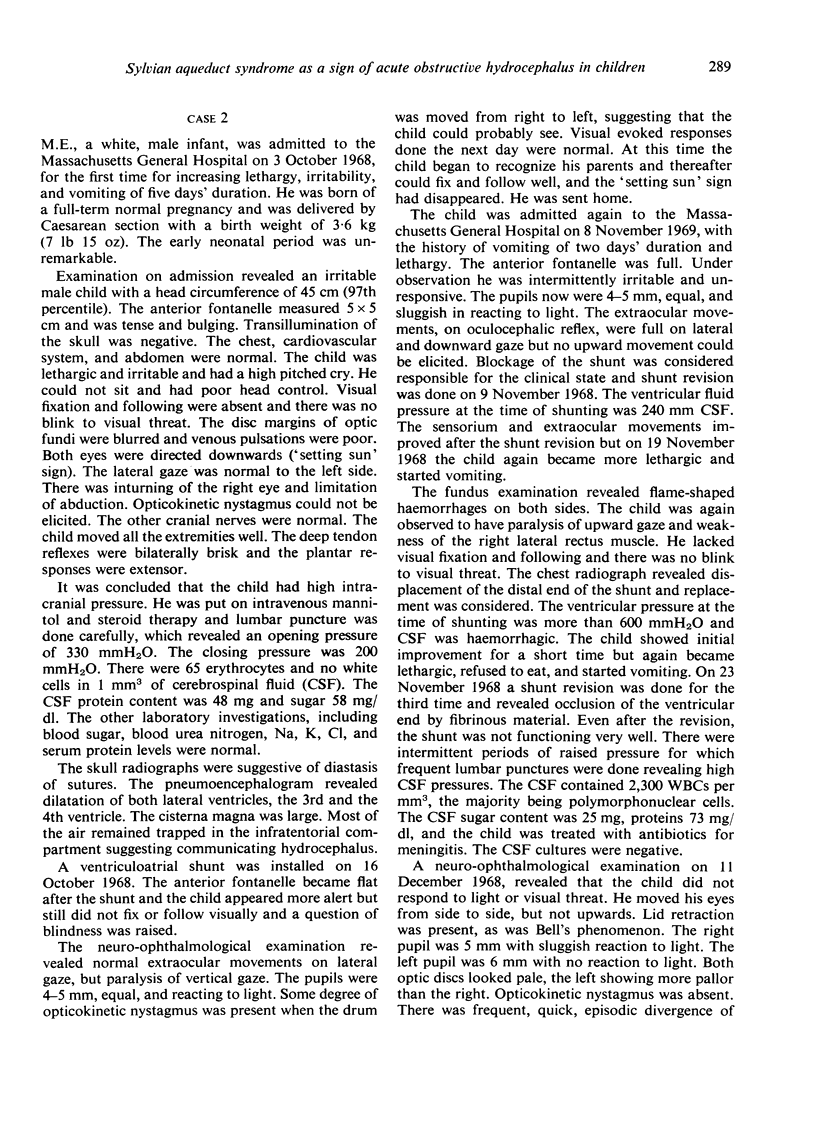
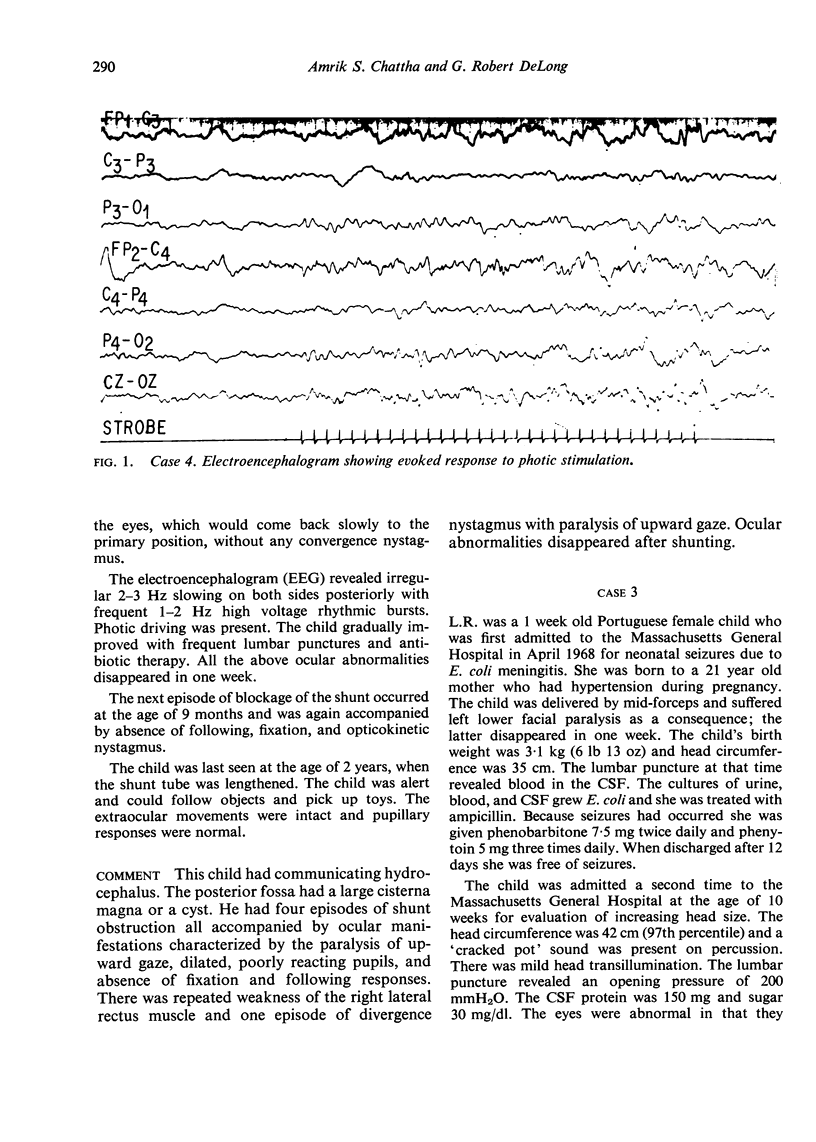
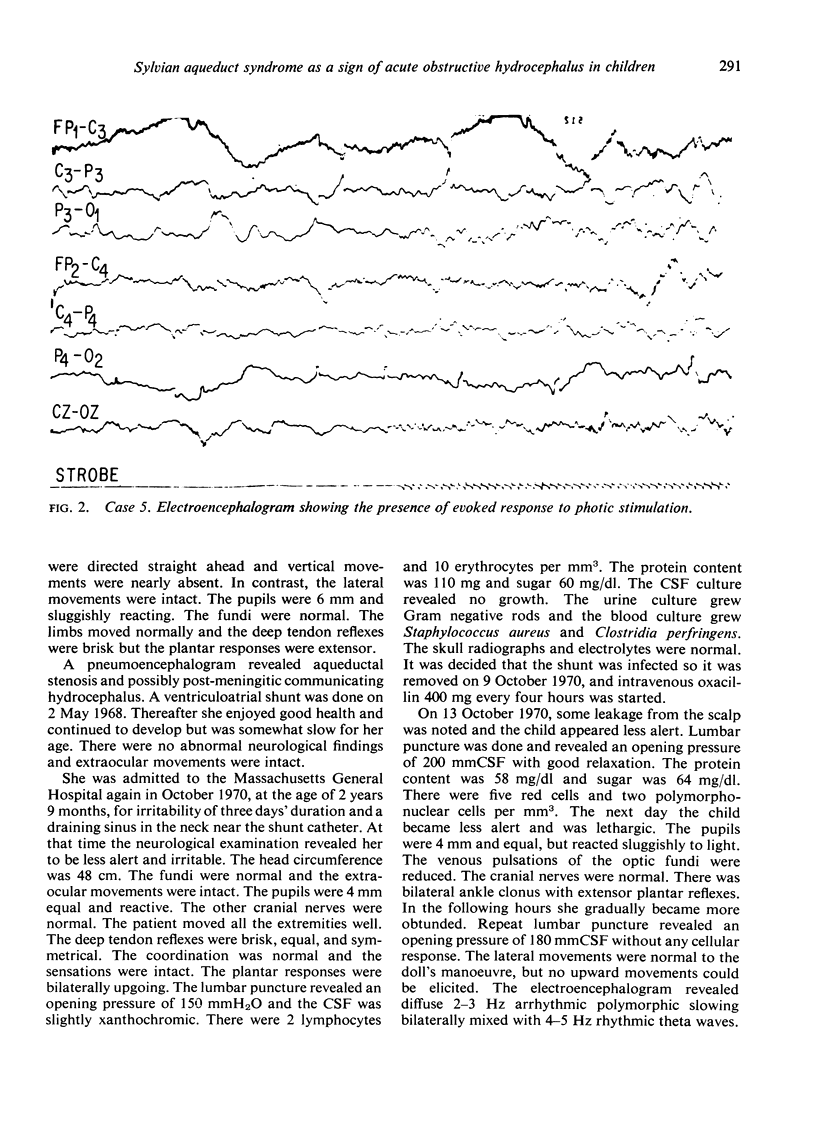
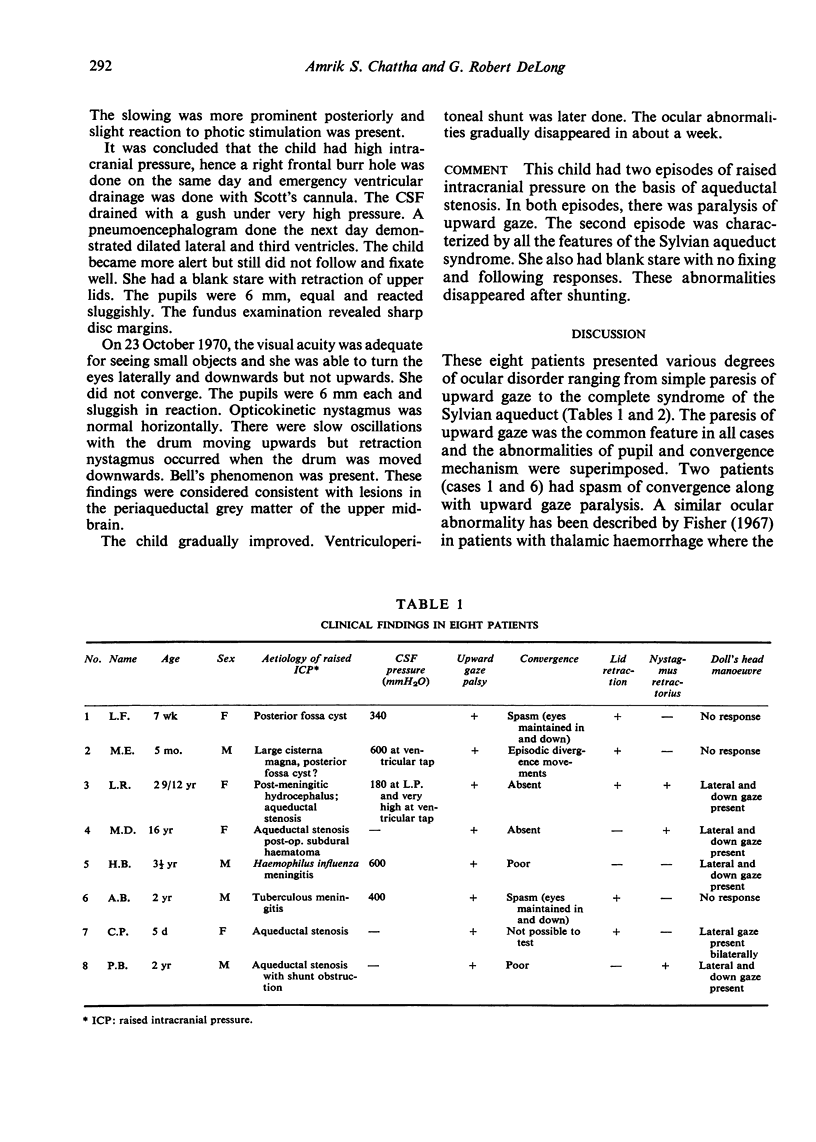
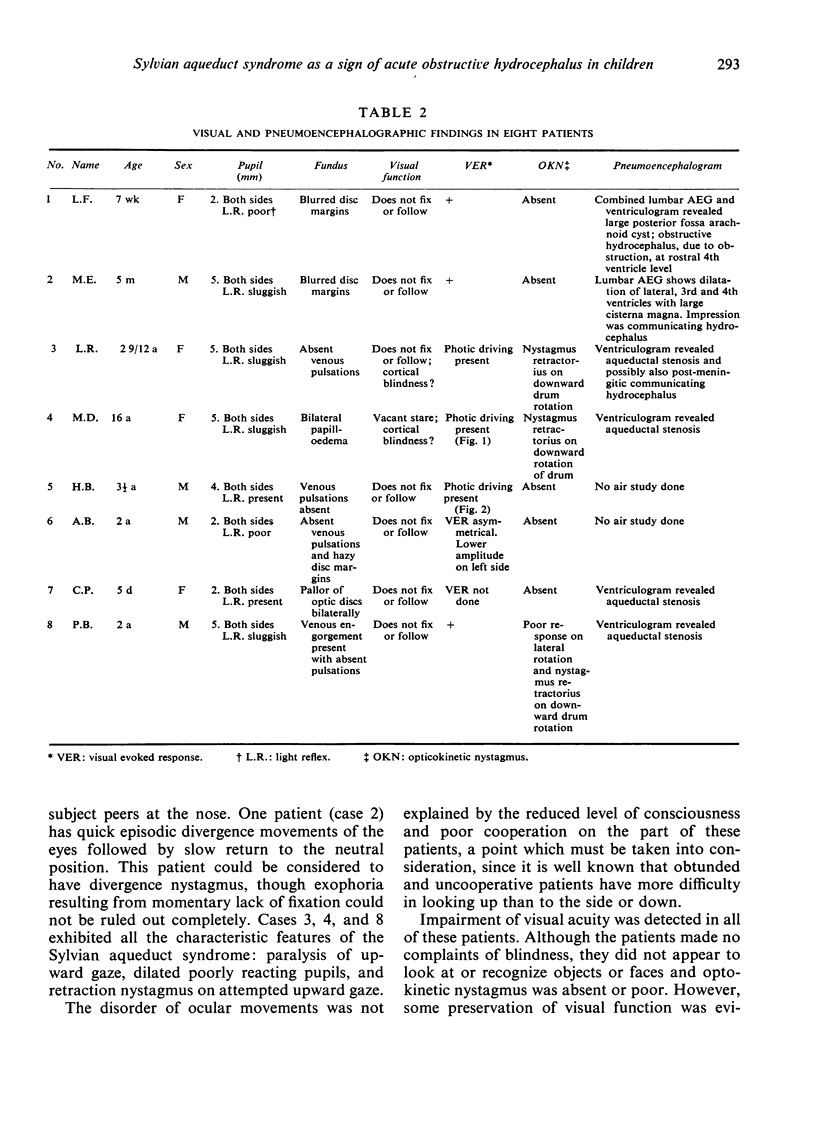
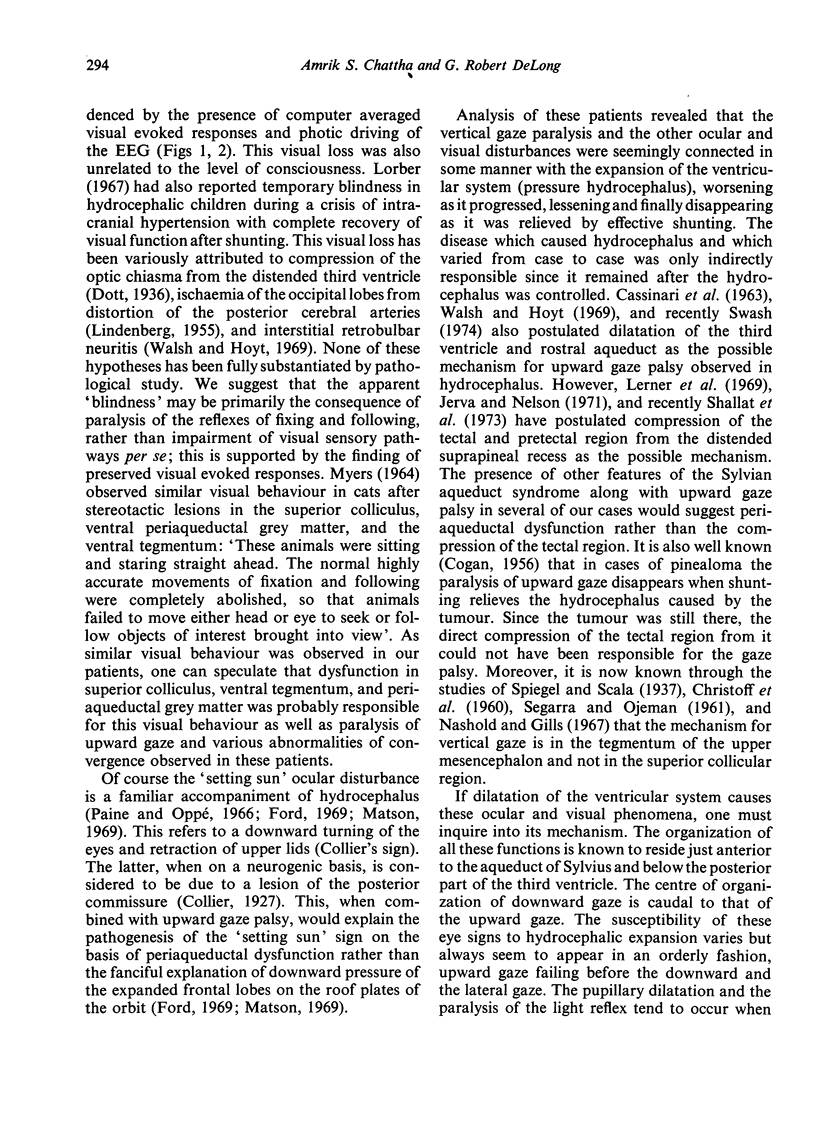
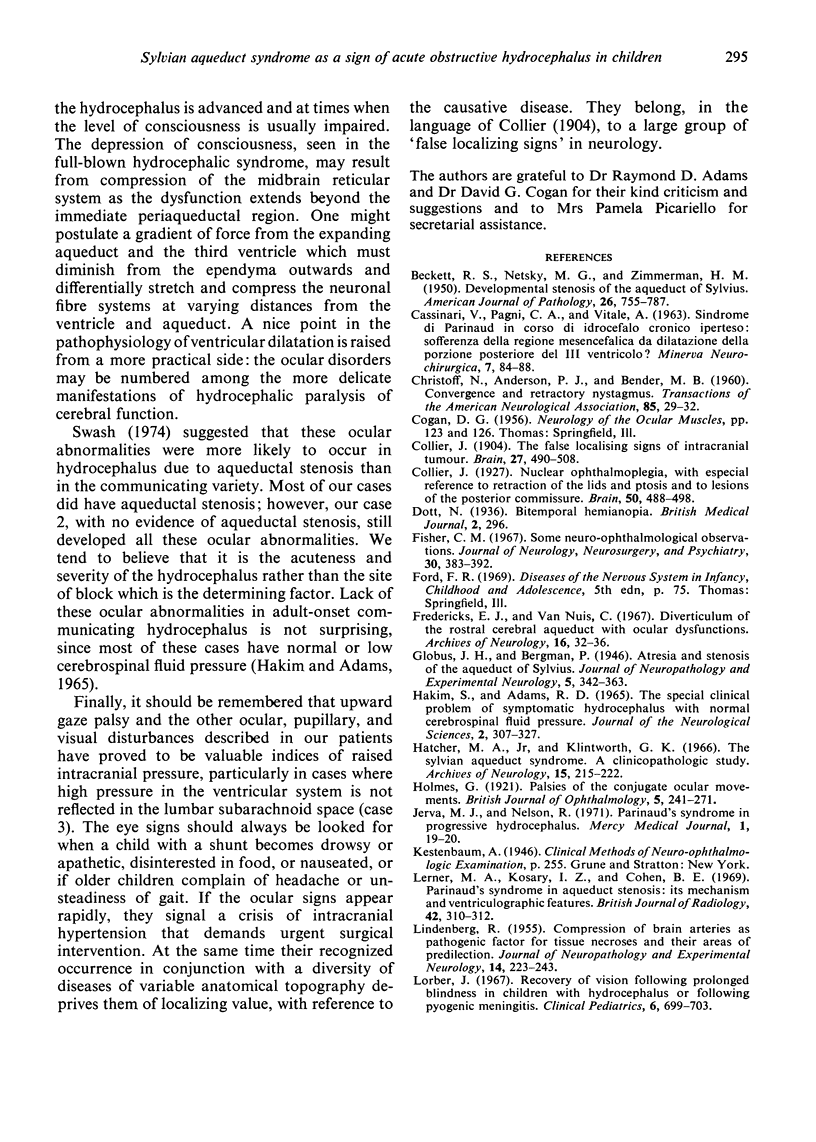
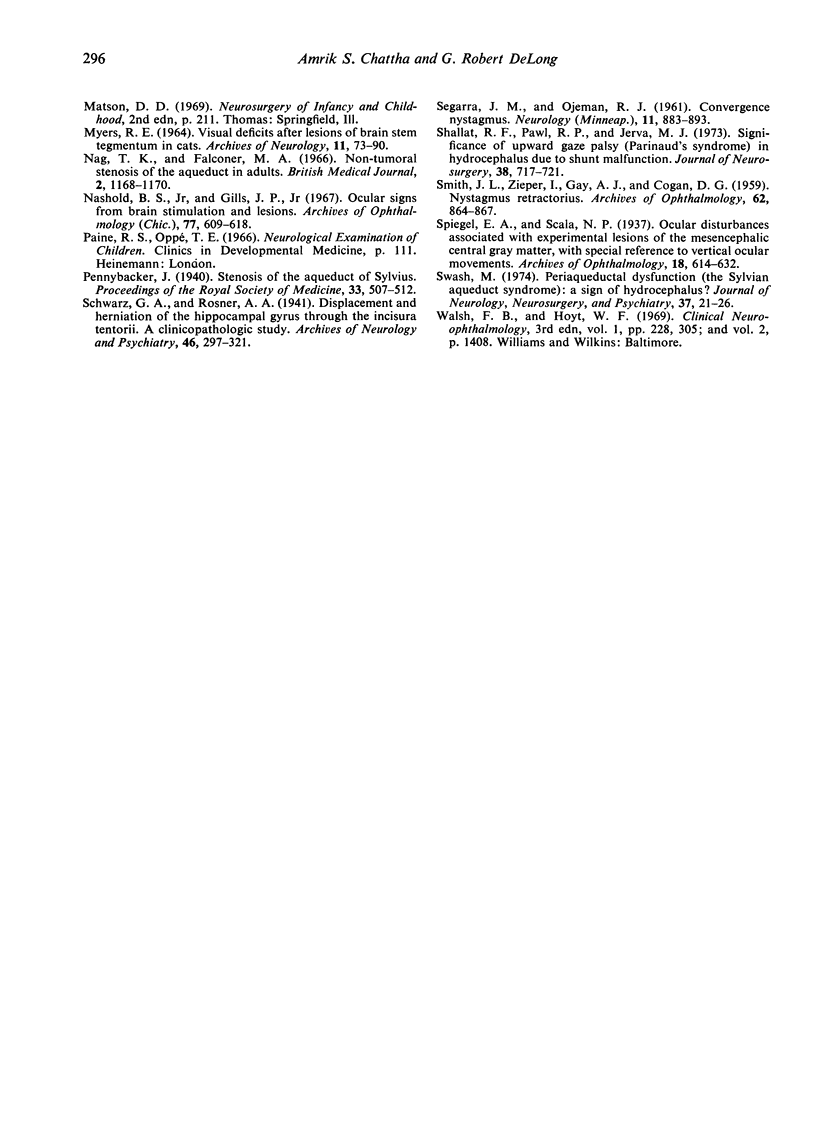
Selected References
These references are in PubMed. This may not be the complete list of references from this article.
- BECKETT R. S., NETSKY M. G., ZIMMERMAN H. M. Developmental stenosis of the aqueduct of Sylvius. Am J Pathol. 1950 Sep;26(5):755–787. [PMC free article] [PubMed] [Google Scholar]
- CASSINARI V., PAGNI C. A., VITALE A. SINDROME DI PARINAUD IN CORSO DI IDROCEFALO CRONICO IPERTESO: SOFFERENZA DELLA REGIONE MESENCEFALICA DA DILATAZIONE DELLA PORZIONE POSTERIORE DEL III VENTRICOLO? Minerva Neurochir. 1963 Jul-Sep;10:84–88. [PubMed] [Google Scholar]
- CHRISTOFF N., ANDERSON P. J., BENDER M. B. Convergence and retractory nystagmus. Trans Am Neurol Assoc. 1960;85:29–32. [PubMed] [Google Scholar]
- Fredericks E. J., Van Nuis C. Diverticulum of the rostral cerebral aqueduct with ocular dysfunctions. Arch Neurol. 1967 Jan;16(1):32–36. doi: 10.1001/archneur.1967.00470190036004. [DOI] [PubMed] [Google Scholar]
- Hakim S., Adams R. D. The special clinical problem of symptomatic hydrocephalus with normal cerebrospinal fluid pressure. Observations on cerebrospinal fluid hydrodynamics. J Neurol Sci. 1965 Jul-Aug;2(4):307–327. doi: 10.1016/0022-510x(65)90016-x. [DOI] [PubMed] [Google Scholar]
- Hatcher M. A., Jr, Klintworth G. K. The sylvian aqueduct syndrome. A clinicopathologic study. Arch Neurol. 1966 Aug;15(2):215–222. doi: 10.1001/archneur.1966.00470140105015. [DOI] [PubMed] [Google Scholar]
- Holmes G. PALSIES OF THE CONJUGATE OCULAR MOVEMENTS. Br J Ophthalmol. 1921 Jun;5(6):241–250. doi: 10.1136/bjo.5.6.241. [DOI] [PMC free article] [PubMed] [Google Scholar]
- LINDENBERG R. Compression of brain arteries as pathogenetic factor for tissue necroses and their areas of predilection. J Neuropathol Exp Neurol. 1955 Jul;14(3):223–243. doi: 10.1097/00005072-195507000-00001. [DOI] [PubMed] [Google Scholar]
- Lerner M. A., Kosary I. Z., Cohen B. E. Parinaud's syndrome in aqueduct stenosis: its mechanism and ventriculographic features. Br J Radiol. 1969 Apr;42(496):310–312. doi: 10.1259/0007-1285-42-496-310. [DOI] [PubMed] [Google Scholar]
- Lorber J. Recovery of vision following prolonged blindness in children with hydrocephalus or following pyogenic meningitis. Clin Pediatr (Phila) 1967 Dec;6(12):699–703. doi: 10.1177/000992286700601212. [DOI] [PubMed] [Google Scholar]
- MYERS R. E. VISUAL DEFICITS AFTER LESIONS OF BRAIN STEM TEGMENTUM IN CATS. Arch Neurol. 1964 Jul;11:73–90. doi: 10.1001/archneur.1964.00460190077006. [DOI] [PubMed] [Google Scholar]
- Nag T. K., Falconer M. A. Non-tumoral stenosis of the aqueduct in adults. Br Med J. 1966 Nov 12;2(5523):1168–1170. doi: 10.1136/bmj.2.5523.1168. [DOI] [PMC free article] [PubMed] [Google Scholar]
- Nashold B. S., Jr, Gills J. P., Jr Ocular signs from brain stimulation and lesions. Arch Ophthalmol. 1967 May;77(5):609–618. doi: 10.1001/archopht.1967.00980020611009. [DOI] [PubMed] [Google Scholar]
- Pennybacker J. Stenosis of the Aqueduct of Sylvius: (Section of Neurology). Proc R Soc Med. 1940 Jun;33(8):507–512. [PMC free article] [PubMed] [Google Scholar]
- SEGARRA J. M., OJEMAN R. J. Convergence nystagmus. Neurology. 1961 Oct;11:883–893. doi: 10.1212/wnl.11.10.883. [DOI] [PubMed] [Google Scholar]
- SMITH J. L., ZIEPER I., GAY A. J., COGAN D. G. Nystagmus retractorius. Arch Ophthalmol. 1959 Nov;62:864–867. doi: 10.1001/archopht.1959.04220050124020. [DOI] [PubMed] [Google Scholar]
- Shallat R. F., Pawl R. P., Jerva M. J. Significance of upward gaze palsy (Parinaud's syndrome) in hydrocephalus due to shunt malfunction. J Neurosurg. 1973 Jun;38(6):717–721. doi: 10.3171/jns.1973.38.6.0717. [DOI] [PubMed] [Google Scholar]
- Swash M. Periaqueductal dysfunction (the Sylvian aqueduct syndrome): a sign of hydrocephalus? J Neurol Neurosurg Psychiatry. 1974 Jan;37(1):21–26. doi: 10.1136/jnnp.37.1.21. [DOI] [PMC free article] [PubMed] [Google Scholar]


